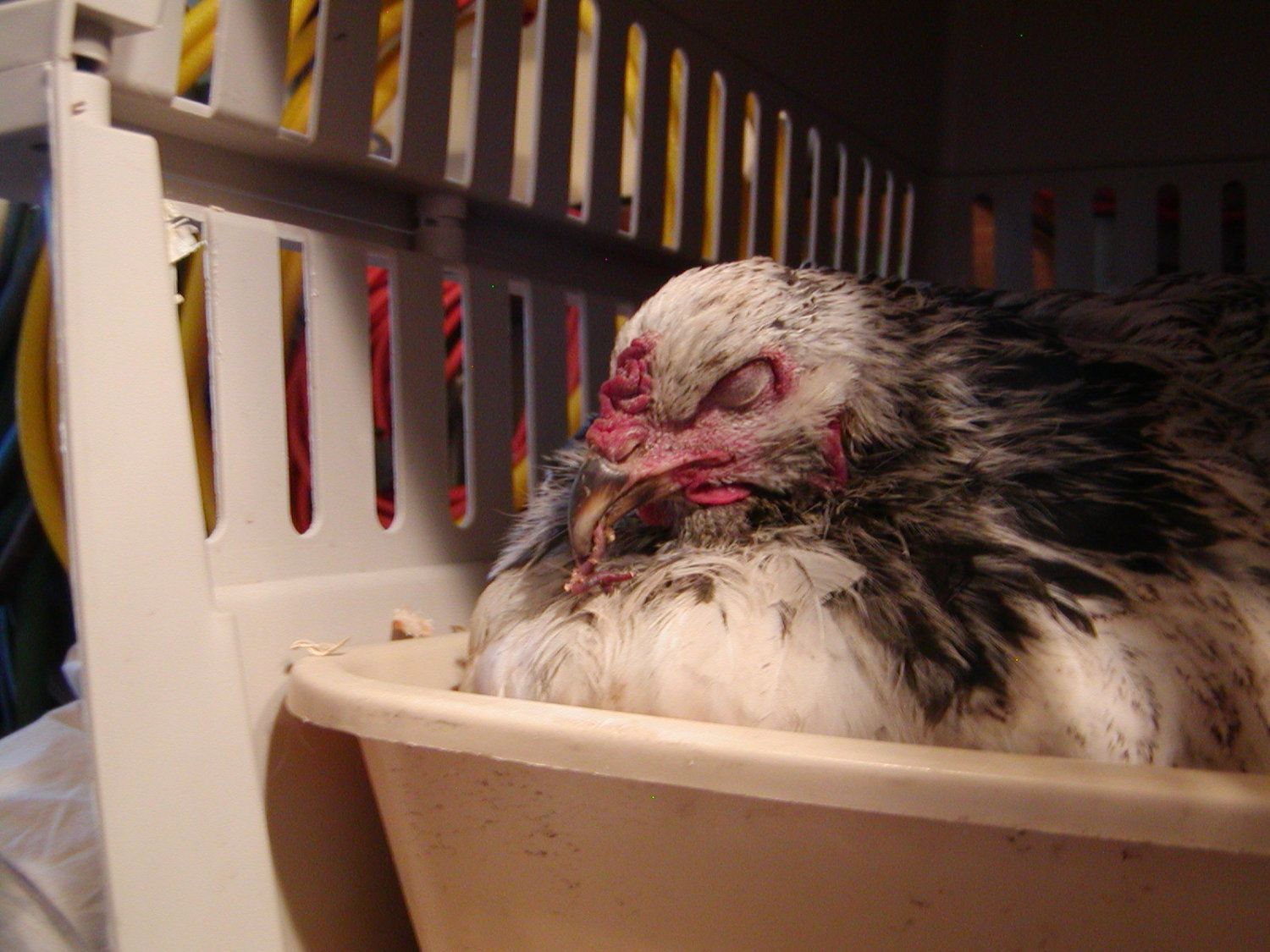My four-year old Brahma hen Nancy has been developing Acites for almost a year. Acites is where fluid builds up in the abdominal area due to liver problems, and it swells up so much it pushes the legs apart. I knew I needed to do something when she swelled up like a water balloon, making it hard to walk and roost. Typically, hens with Acites will develop a wide stance and waddle like a duck. The symptoms are also similar to a hen with internal egg laying problems.
I took pics of Nancy to show how far apart her feet were. Also pictured are the hypodermic needle I used and how my friend positioned her for the operation with Nancy's head tucked securely under her arm. This position is very calming. The fifth photo shows the patient enjoying some treats afterward.
I inserted the needle in just far enough to pierce her tough little hide, figuring the fluid was just beneath her skin. I went in at the rear and to the side and just a couple inches from her vent. As I pulled back on the plunger, I was relieved to see the liquid was yellowish, but clear. If it had been dark with blood in it, I would know it was an infection. As I withdrew the needle, the liquid spilled all over my friend and me, but there was no odor of infection, either.
I kept inserting the needle and pulling out fluid until I had about half of what was in her. I didn't want to send her into shock by removing it all at once. I got about a cup, I guess. But when I put Nancy down on the ground, I saw that she was still leaking fluid, and she continued to drain for the next few hours. By the time it stopped, her swollen pouch was down to the size of a tennis ball!
The outcome exceeded all expectations. Nancy showed no signs of shock or pain. She appeared to have a healthy appetite for a change, too. Best of all, she was able to roost tonight without flapping and losing her balance because of her huge belly, and her feet were back where they belonged, close together.
With Acites, it's almost certain that the fluid will build up, and I'll have to aspirate it again. But I think it may buy my Nancy some extra months of quality life. She was my very first chick. I'm not ready to lose her just yet.
I took pics of Nancy to show how far apart her feet were. Also pictured are the hypodermic needle I used and how my friend positioned her for the operation with Nancy's head tucked securely under her arm. This position is very calming. The fifth photo shows the patient enjoying some treats afterward.
I inserted the needle in just far enough to pierce her tough little hide, figuring the fluid was just beneath her skin. I went in at the rear and to the side and just a couple inches from her vent. As I pulled back on the plunger, I was relieved to see the liquid was yellowish, but clear. If it had been dark with blood in it, I would know it was an infection. As I withdrew the needle, the liquid spilled all over my friend and me, but there was no odor of infection, either.
I kept inserting the needle and pulling out fluid until I had about half of what was in her. I didn't want to send her into shock by removing it all at once. I got about a cup, I guess. But when I put Nancy down on the ground, I saw that she was still leaking fluid, and she continued to drain for the next few hours. By the time it stopped, her swollen pouch was down to the size of a tennis ball!
The outcome exceeded all expectations. Nancy showed no signs of shock or pain. She appeared to have a healthy appetite for a change, too. Best of all, she was able to roost tonight without flapping and losing her balance because of her huge belly, and her feet were back where they belonged, close together.
With Acites, it's almost certain that the fluid will build up, and I'll have to aspirate it again. But I think it may buy my Nancy some extra months of quality life. She was my very first chick. I'm not ready to lose her just yet.
1 hour ago
1 hour ago
1 hour ago








